Ruined church is one of oldest buildings in Hastings
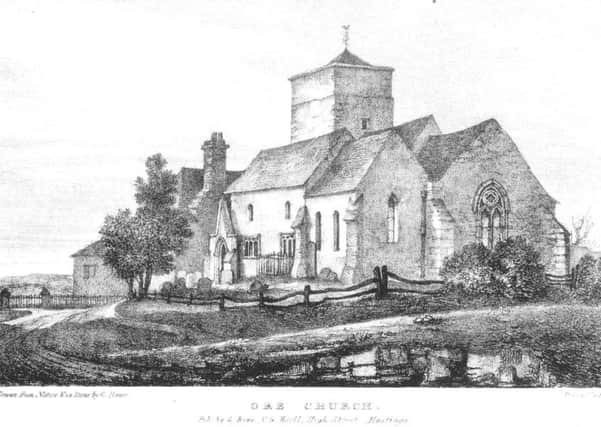

He writes. Just off the Ridge, to the west of Elphinstone Road and reachable via Centurion Rise and Ore Place can be found the picturesque remains of the ancient church of St Helen, one of the oldest buildings in Hastings with the ruins containing features dating from the 11th century.
The church, with its churchyard, is a scheduled ancient monument and the can be visited at any time.
Advertisement
Hide AdAdvertisement
Hide AdHistoric England reports “Old St Helen’s church is important for its architectural features, incorporating both Saxon and Norman building techniques, and its archaeological potential.
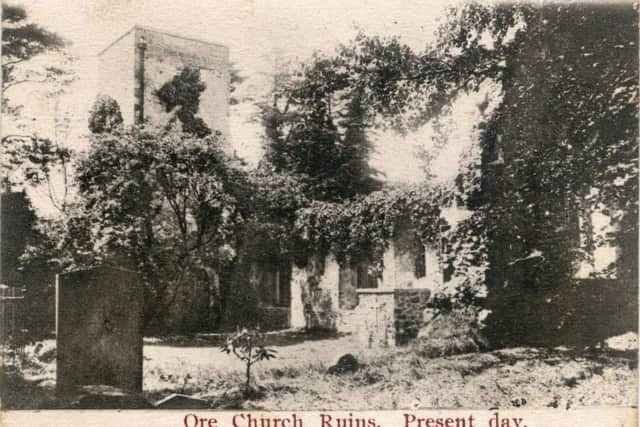

“Owing to its abandonment in the 19th century, buried deposits within the church have suffered little or no subsequent disturbance. The churchyard, in continuous use within its original boundary until c.1870 but then abandoned, contains many surviving 17th-19th century gravestones.
“A close association exists between the church and Ore Manor House which stood c.15m to the west of the tower.”
Until the coming of the railway in the 19th century the parish of Ore was mainly agricultural and the parish sparsely populated so the church was quite adequate for its congregation. By the beginning of the 19th century the setting of the church was considered picturesque and contemporary guide books gave descriptions and directions on how to find it.
Advertisement
Hide AdAdvertisement
Hide AdIn 1949, F.W.B. Bullock, whose father, W C Bullock, had been Rector of Ore from 1897 to 1929, published his ‘Short Guide to the Ruins of the Old Parish Church of St. Helen, Ore’ in which he tells us that the earliest manuscript evidence for the existence of Ore Church is in the Ecclesiastical Valuation of England and Wales of 1291, made by the authority of Pope Nicholas IV.
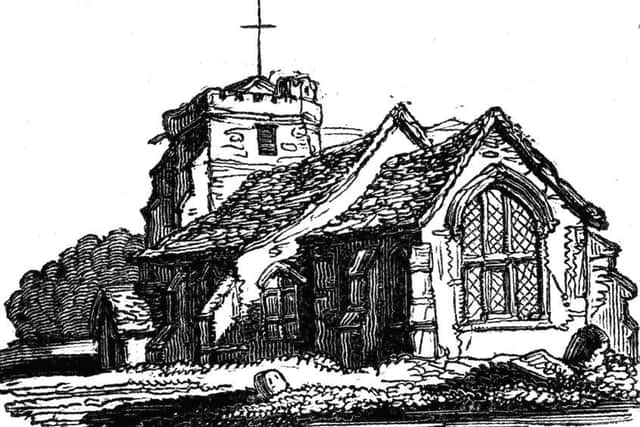

This states that the income of the Church of Ore did not then exceed £5 6s. 8d. per annum (£6.33) and Ore Church probably became a parish church with its own rector from the outset of its history.
The first proof that its incumbent was Rector of Ore dates from 1340 with the name earliest being William Page de Ukfield, who left Ore on April 18, 1361 on an exchange of benefices with Peter de Archesfont.
The oldest surviving manuscript evidence that Ore Parish Church was dedicated to St. Helen is in the will of 1421 of John Halle of Ore and the oldest parts of the building are the north wall with its little window and the Transitional Norman style tower which dates from around 1200. Inside the tower is the original stair turret up to the belfry stage on the north side and the Early English font which was rediscovered in 1904 or 1905. Broken in many pieces, it has been restored and placed in the corner of the old tower because it could not be used in the new church, since it was not in a condition to hold water.
Advertisement
Hide AdAdvertisement
Hide AdThe Chancel, in Early English style dates from the 13th century, with its two lancet windows and an arched tomb recess between them on the north side. The East window is a two-light Decorated one belonging to the 14th century. Two windows of two lights each are shown in early 19th century views and were inserted in the north wall of the nave but they were replaced in the 19th century by the present two windows of three lights each in the Perpendicular style.
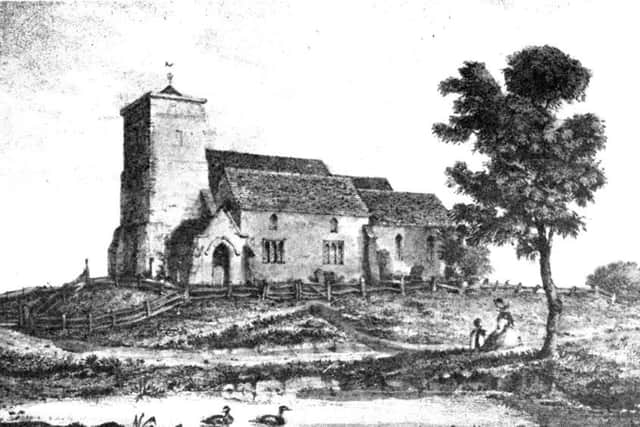

The old church for centuries consisted only of chancel, nave and western tower, but probably in the 18th century, as the local population increased, a south aisle with an overall roof was added to the nave and the western portion of the chancel with two dormer windows each of three lights and a porch.
In 1776 Sir William Burrell stated that the church has “a nave and two small aisles and a chancel,” but he evidently meant the two parts of one south aisle; by 1817 however this aisle had been removed though the porch survived. In 1821 a new south aisle was constructed, extending the whole length of the nave and chancel and having a separate roof. West of it was a porch, leading in to the tower; another porch was added in the 19th century at the north-west angle of the nave and used as a vestry. A western gallery was erected in 1816 and in 1821 the new south aisle also had a gallery; the former was entered from the tower staircase.
The early 19th century bell, the pitch-pipe used for starting the services, a medieval tile, the parish registers dating back to 1558, a number of 18th and 19th century memorial tablets and one magnificent monumental brass were removed to the modern parish church. The brass, now on the north wall of the chancel of the new church, is probably in memory of John Halle who died in 1421 or 2 and Amicia his wife who died in 1430 although it may be earlier.
Advertisement
Hide AdAdvertisement
Hide AdGeneral the Honourable James Murray, of “Beauport” and Ore Place, who died in 1794 is buried in the churchyard and his monumental inscription is now in the replacement church.
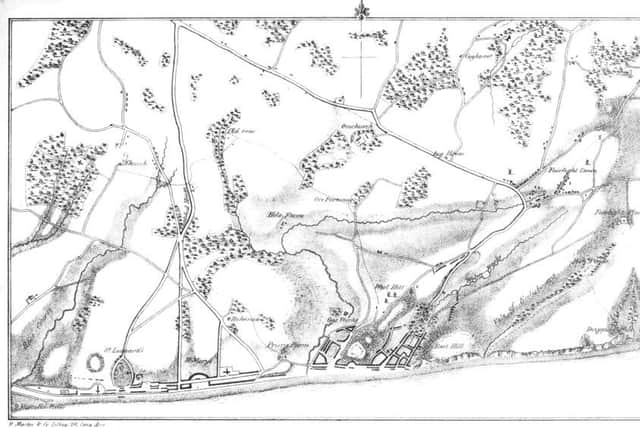

“Southall’s Pocket Guide to St. Leonards and Hastings “ (about 1836) observes: -”The church-yard is chiefly remarkable for containing the graves of five smugglers in a row, who were killed in an encounter with the revenue officers; and of seven females, whose white tombstones, likewise in a row, show that they died about the age of seventeen.” Four of the smugglers died in 1824, the fifth in 183I. The grave of Dr. Fearon, a noted Evangelical preacher, after whom Fearon Road is named), Rector of Ore 1815 - 1847, is by the path on the south side of the church.
C. G. Harper, in “The Hastings Road” (1906) notes :-” The unusual name of ‘Lavender’ is seen on one of the old tombstones.” Actually there were two such stones near one another, by which lavender bushes were planted, a few feet north of the tower.
The Hastings News of 11th June 1869 reported that the last service had been held in the old parish Church of Ore, on Sunday 6 June. “The building was densely crowded and numbers were unable to obtain admission.
Advertisement
Hide AdAdvertisement
Hide AdThe Rector, the Rev W T Turner, said the centuries-old church was unsound and, as the building was closely surrounded by graves, rebuilding would disturb the graves”. The News of 2nd July reported that the Countess of Waldegrave had laid the memorial corner-stone for the new St Helens Church on Wednesday 30 June on and close to the Ridge, a few hundred yards from the old church offered by Edward Habershon of Beaulieu, who would be the architect.
At the ceremony, the Right Rev Bishop Harding said the old church stood in immediate proximity to where had stood the house occupied by John of Gaunt, Duke of Lancaster, a key figure in the Reformation and the church had been his chapel.
All illustrations throughout this series are from Ion Castro’s own collection and he can make available copies of many of the historic images used in this series. There’s more local history on Ion’s website, www.historichastings.co.uk.
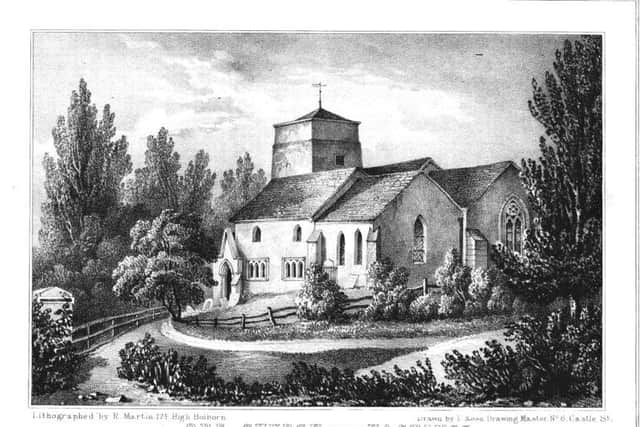

Captions:
A distant view from the south.
A distant view from the south about 1826, showing the old rectory in Ore Lane, later “Oakdene,” Elphinstone Road, (and now gone) in the foreground and the church and Ore Place on the top of the hill in the background, from a print of about 1826 drawn by George Rowe. Published by G. Wooll, Printseller. 5, High Street, Hastings.”
Kidd Ore Church.
Advertisement
Hide AdAdvertisement
Hide AdFrom Kidd’s “Picturesque Pocket Companion to Hastings”, a guide book published in 1832. Kidd recommended a trip to the church.
Ore Church Photo.
Because the old church went out of use in 1869 in the infancy of photography contemporary photos are rare, this one shows the eastern entrance to the churchyard. Note the size of the lady’s dress!
Ore Church Sussex.
George Rowe clearly liked the old church because it features in a lot of his lithographs (published by well-known printseller George Wooll of 5 High Street)
Ross Lithograph.
‘Ore Church near Hastings’ - an 1820’s lithograph from a drawing by Thomas Ross , ‘Drawing Master’ Antiquarian and several times Mayor of Hastings who operated from 6 Castle Street.
Ross Map.
Advertisement
Hide AdAdvertisement
Hide AdThis map of the environs of Hastings was published in 1835 in the 1st edition of “Ross’s Hastings and St. Leonards Guide,” and illustrates the rural and isolated character of the parish of Ore and the central position of its ancient church (just below the bottom of the North indicator). Notice that Hastings is still mostly confined to the Bourne valley but Pelham Crescent is in place as are the beginnings of St.Leonards and notice that the new gas works, now Morrisons, the on the outskirts of the ‘new’ town is considered worthy of inclusion.
Rowe Ore Church 2.
About 1828. A view from the southwest, by George Rowe and published by Wooll.
Rowe Ore Church.
1820’s view of the Old Church, Rowe’s apparently favourite subject. Published by Wooll in High Street.
Stockdale.
A vignette of Ore Church from the north-west drawn in 1816 by F. W. L. Stockdale and published in his” Concise Historical and Topographical Sketch of Hastings “ in 1817.
Then and Now.
The ‘now’ is itself more than a century ago so the comparison is between the church some decades after it was abandoned and the building in the early 19th century.